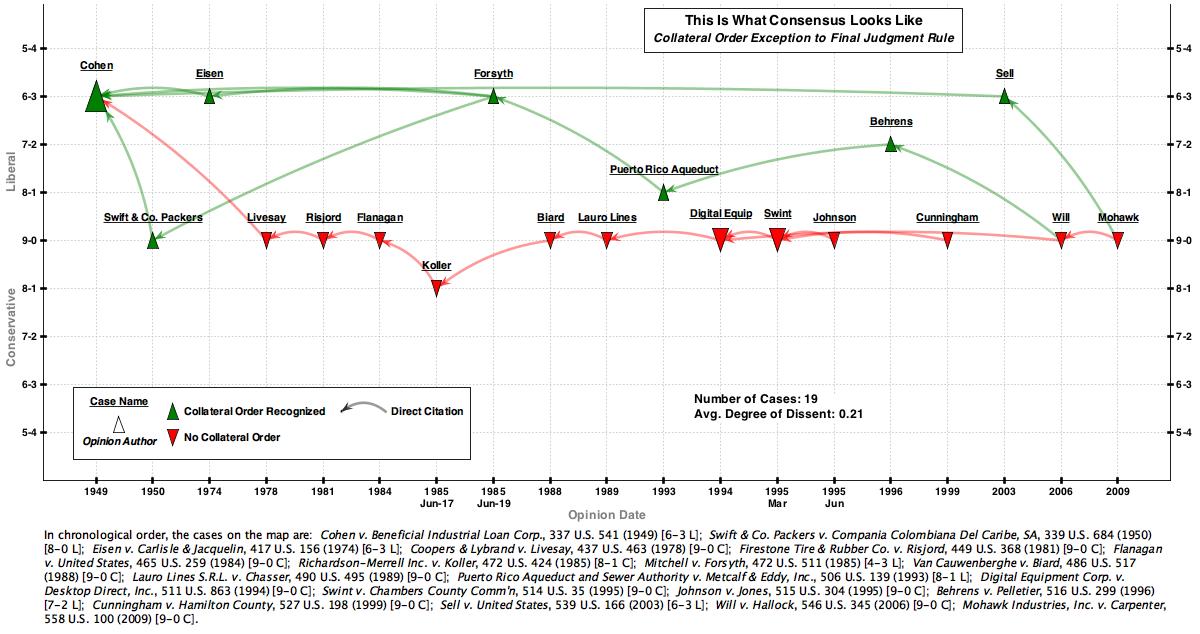For many Civil Procedure professors, the end of the Fall semester means it’s time to teach appeals. I’m not afraid to admit this gives me a certain nerdy joy. O final judgment! This year, I succumbed to nerd impulses and mapped out the Supreme Court’s doctrine regarding the “collateral order” exception to 28 U.S.C. 1291’s “final judgment rule.” Here’s what I found. (Click on image for full-sized version with links to the underlying opinions in Casetext).
The map shows 19 of the Supreme Court’s collateral order cases using a modified Spaeth Projection. To read the map, note first that red triangles represent cases where no collateral order exception was found (hence no appellate jurisdiction existed) and green triangles represent cases where the exception was recognized (providing appellate jurisdiction). More significantly, 9-0 decisions are displayed in the middle of the map. The amount of consensus lessens as cases move away from the middle, such that “5-4” decisions are displayed at the top and bottom of the map.
What is immediately striking is that the Court has an extraordinarily large number of 9-0 cases in this area of doctrine. Indeed, every case finding that the collateral exception does not apply was unanimous except for 1985’s Richardson-Merrell v. Koller. While the cases finding the exception does apply have provoked more dissent — going all the way back to the founding case of Cohen v. Beneficial — the average “degree of dissent” in the network is a mere 0.21. (The degree of dissent in a single case is calculated by multiplying the number of dissents by 0.25 so that a 5-4=1, 6-3=.75, 7-2=.5, 8-1=.25 and 9-0=0).
This map thus provides a striking visual example of what Professor Howard Wasserman has called “operational consistency and predictability” in some of the Court’s procedural rulings. Personally, I find the picture reassuring since it shows that not everything is political and divisive at the Court. Of course, there aren’t that many of us who care about these cases or the collateral order exception. For those few, I say: “Stay proud and I hope you enjoy the view!”

